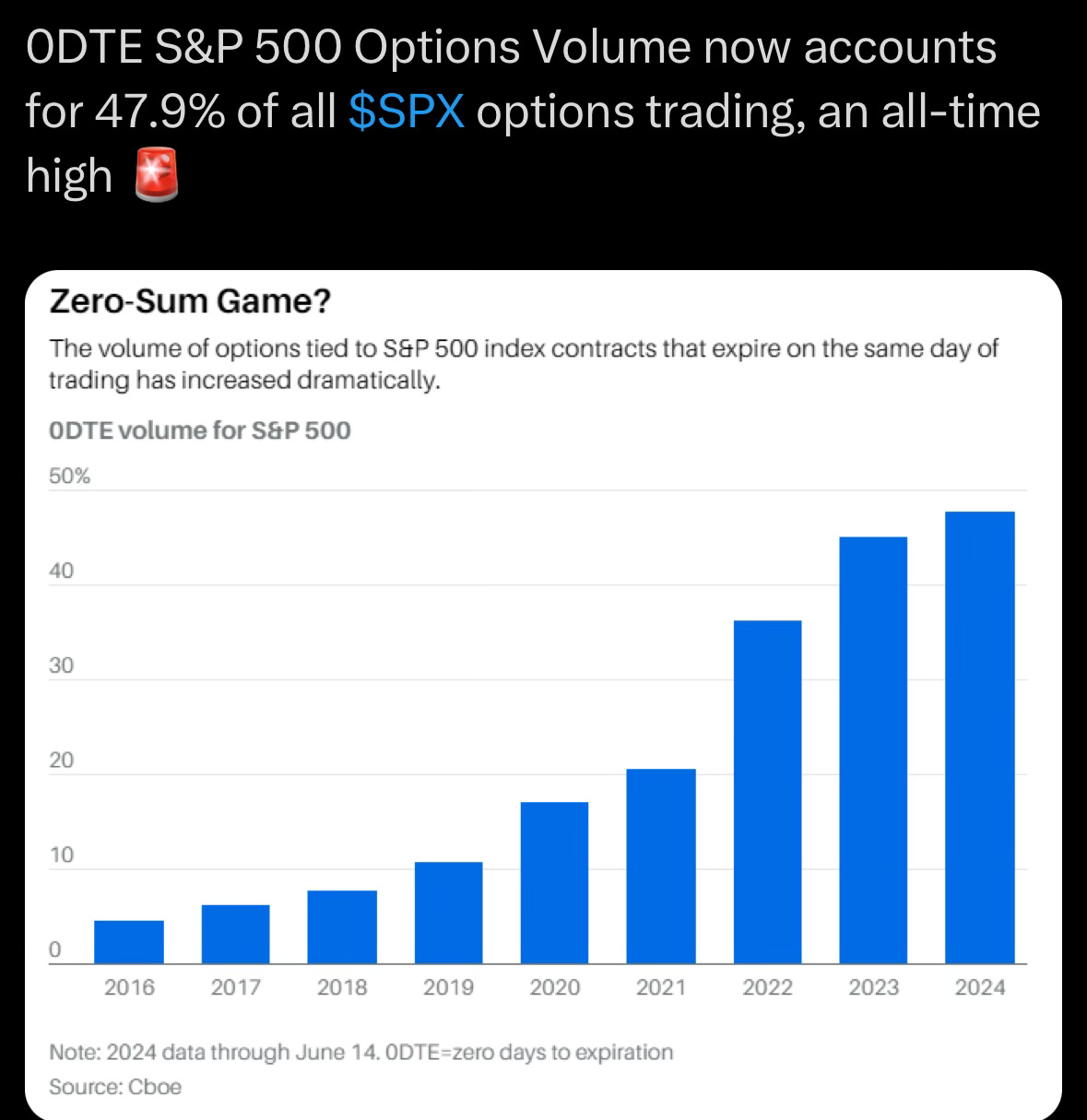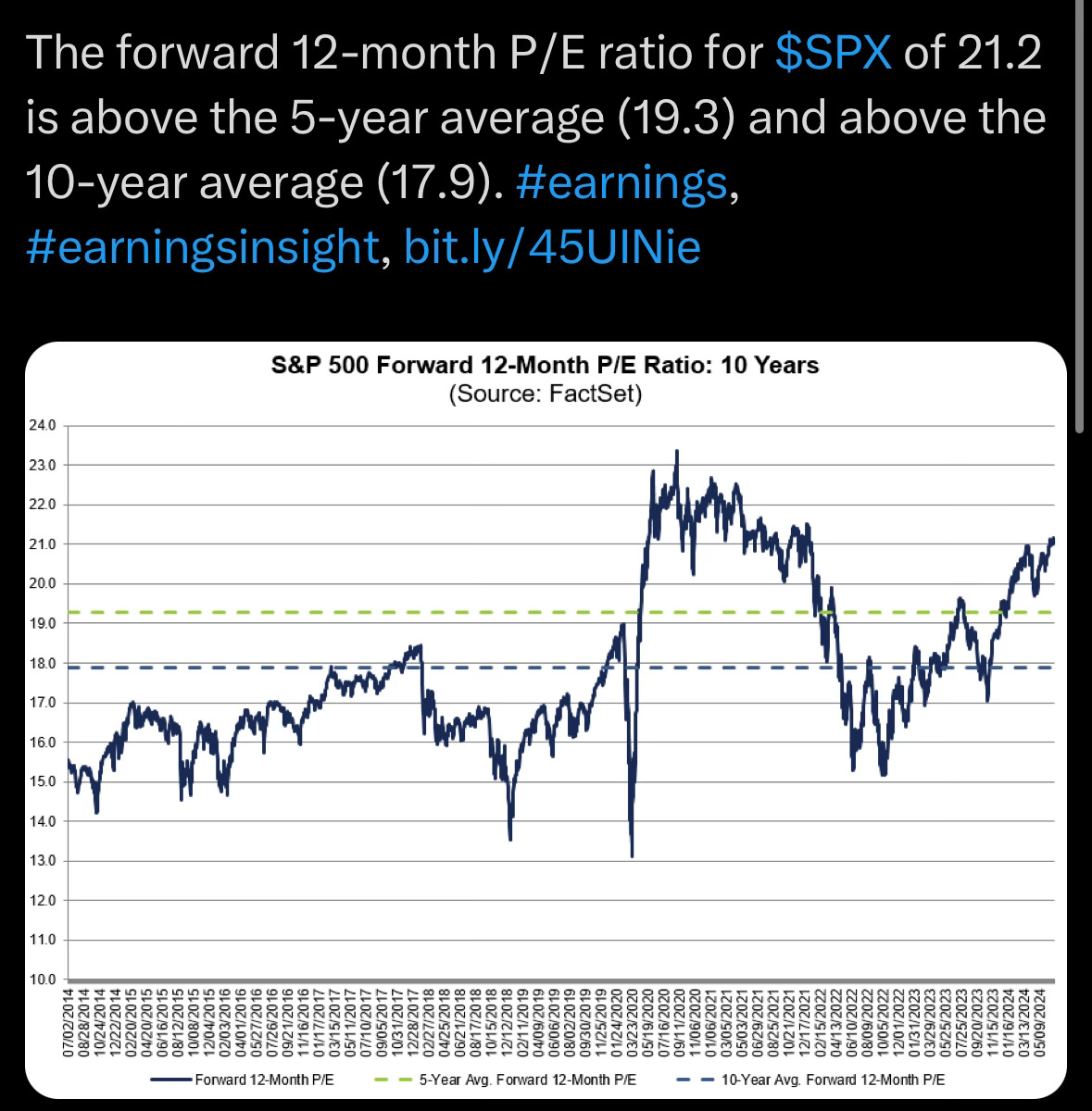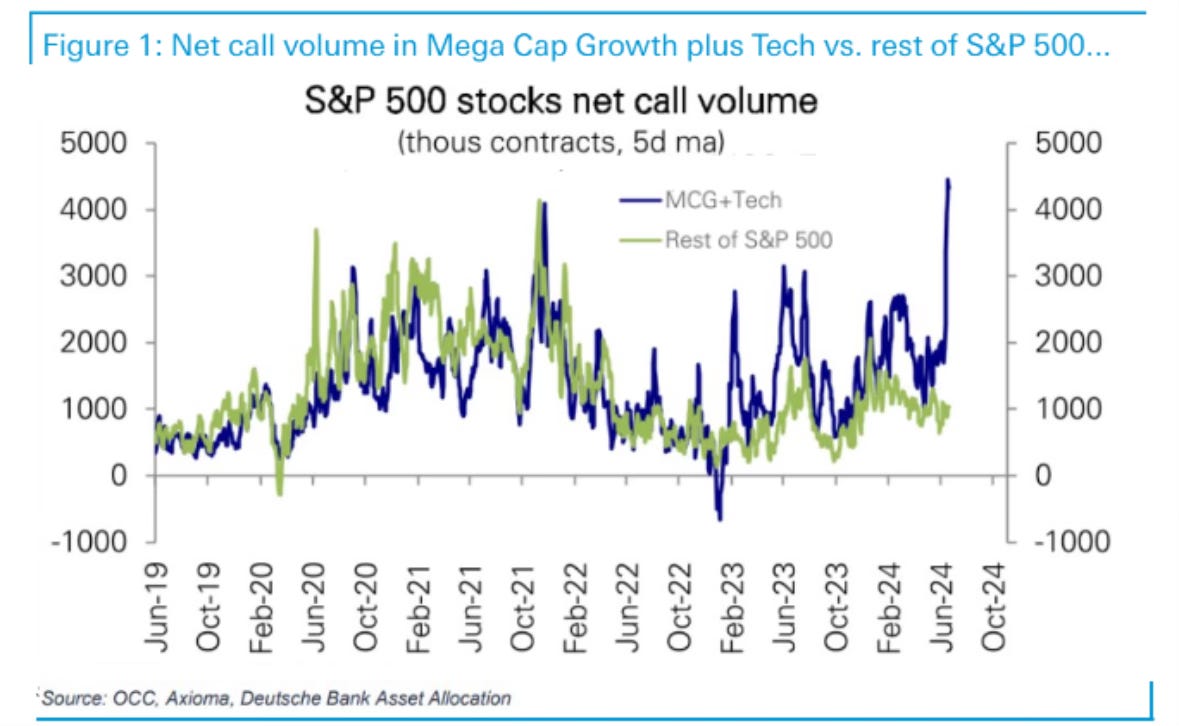Stock Market Volmageddon 2: The Return of Risk
This is one sequel investors may not want to watch
Introduction
On the bustling streets of Wall Street, a feverish craze grips the financial district as investors and speculators scramble to cash in on the latest AI boom, driven by the promise of easy and quick profits. Seasoned traders and novice investors alike cast daring bets, their screens reflecting the frenetic activity of a market on the edge. This risk-taking has manifested in zero-day options, call options, and leveraged ETFs, pushing leverage and risk to the highest levels in U.S. stock market history. The specter of a financial cataclysm looms larger than ever, threatening to dwarf even the infamous “Volmageddon” of 2018. As we stand on the precipice of what some fear could be an even more catastrophic event, The Coastal Journal is calling it a possible Volmageddon 2.0 The Return of Risk.
(A trip down memory lane of 2018 )
The 2018 Volmageddon
The echoes of 2018’s volatility explosion has been all but forgotten. In 2018, a perfect storm of low put-to-call ratios and a sudden spike in the VIX (volatility index) triggered a cascade of selling that sent shockwaves through the financial world. A low put-to-call ratio indicated rampant investor complacency and bullish sentiment. Investors were heavily betting on market upside without sufficient hedging, creating a fragile market condition. This fragility was exposed in 2018, when the VIX spiked dramatically, reflecting a sudden shift in investor sentiment from complacency to panic. The S&P 500 plummeted, erasing over $1 trillion in market value and marking the worst monthly performance in over two years.
Fast forward to today, and a similar sense of invincibility pervades Wall Street. Not only have investors and speculators seemingly forgotten the events of 2018, but the more recent downturn just 24 months ago in 2022 also appears to have faded from memory. Despite the glaring warnings, the market is once again steeped in reckless optimism, driven by the allure of quick profits from the latest AI craze. This heady mix of greed and high-risk trading strategies, including zero-day options, call options, and leveraged ETFs, has pushed leverage and risk to unprecedented levels in U.S. stock market history. Based on the current data, the five day average of put to call options is near record lows. These data points normally point that market volatility is about to take off.
The specter of a financial cataclysm looms larger than ever, threatening to dwarf even the infamous “Volmageddon” of 2018. As we stand on the precipice of what some fear could be an even more catastrophic event.
Current Market Conditions
Fast forward to today, and the market landscape has undergone a dramatic shift. Yet, ominously familiar patterns are once again emerging. The rise of zero-day options (0DTE) has injected a new level of frenetic energy into daily trading. Approximately $1 trillion in these high-octane instruments changes hands daily, with a staggering 95% driven by institutional investors. Options volume now constitutes 47.9% of all S&P 500 ($SPX) options trading, amplifying the potential for explosive market movements to unprecedented levels. For more in-depth analysis on the Zero date options bubble check out our previous article ( HERE ).
In 2024, reduced volatility has become the prevailing trend, marked by frequent 1% or higher price swings in individual stocks and the Nasdaq index. The current market exhibits a notable focus on call options, reflecting an unprecedented spread in the put-to-call ratio that underscores a market heavily skewed towards optimism. This one-sided wager on market upside closely echoes the conditions observed at the peak of 2021 before the 2022 bear market commenced.
Adding fuel to the fire is the narrowest stock market breadth in U.S. history. The market’s performance is being driven by a handful of tech giants, often referred to as the “MAG 7” (Microsoft, Apple, Google, Amazon, Facebook, Nvidia, and Tesla). These seven stocks are responsible for the majority of market gains, creating a precarious situation where the broader market’s health is masked by the performance of these few titans.
These tech behemoths are now perched atop dizzying valuations, with their price-to-earnings (P/E) ratios reaching stratospheric heights. At approximately 35x earnings, these “Magnificent Seven” tech stocks dwarf the broader S&P 500’s modest 15.5x P/E ratio when excluding their influence. This skyward trajectory in stock prices far exceeds their actual earnings growth, leading to a ballooning of market values that defy rational expectations.
Pinned for sustained double-digit expansion over multiple years, these corporate giants are navigating a precarious path with little room for missteps. The slightest earnings hiccup could trigger a cascading downturn as we approach Q2 earnings, unraveling investor confidence built upon lofty projections and speculative optimism. Fueling this high-stakes gamble are the frenzied bets on call and put options, artificially suppressing the VIX (volatility index) and obscuring latent vulnerabilities within the market’s underbelly.
Amidst historic levels of net call option volume on these seven tech stocks, the prevailing sentiment seems to echo an unshakable faith in perpetual market ascent—a sentiment eerily reminiscent of the speculative bubbles of 1929 and 2000. Yet, history cautions against such unchecked exuberance and leveraged risk-taking, often heralding tumultuous market corrections and sobering reckonings for those swept up in the fervor of the moment.
To get the full article and continue reading, consider becoming a paid subscriber for more insights and data on today’s stock market.
Keep reading with a 7-day free trial
Subscribe to The Coastal Journal to keep reading this post and get 7 days of free access to the full post archives.









